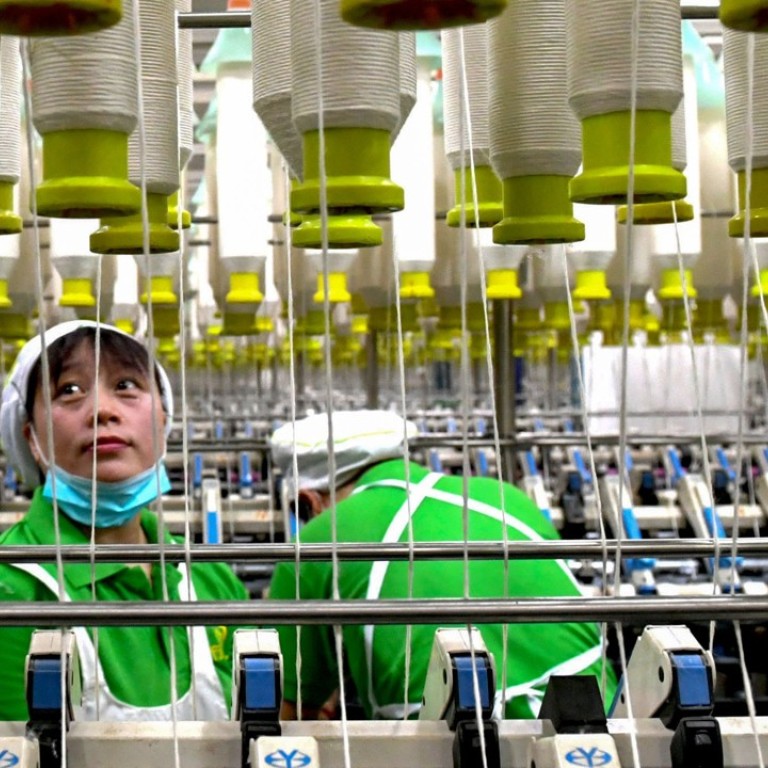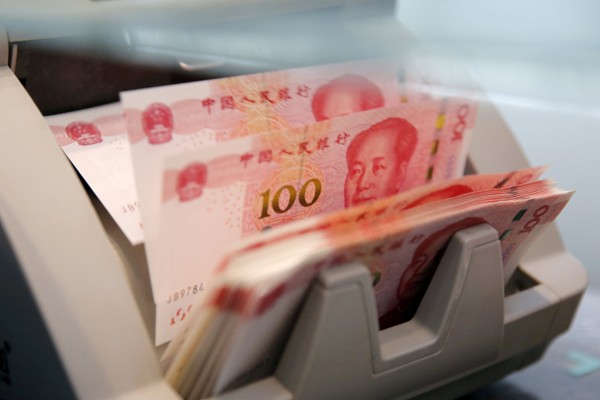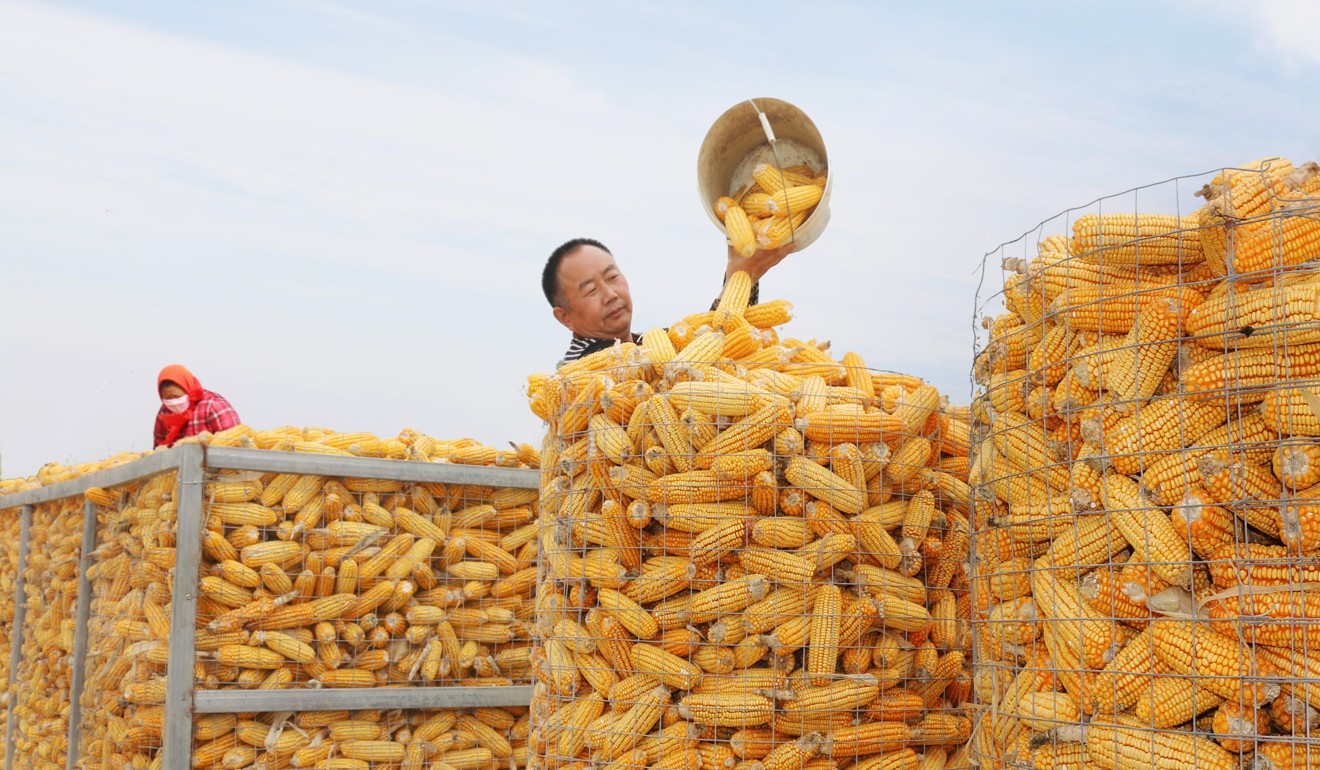
China to sell new yuan bills in Hong Kong – a new tool to control the currency now at a 10-year low
- Fresh signs of trade-war pressure as manufacturing activity falls
- Numbers show further economic slowing and could prompt more policy support from Beijing after previous initiatives fail to spark revival
The People’s Bank of China (PBOC) has rolled out a new financial tool to help it defend the yuan’s exchange rate, fixing the currency at a new 10-year low to the US dollar as weaker-than-expected domestic economic data threatened to push it lower.
Manufacturing and service sector activity data released on Wednesday morning caught many analysts on the hop and the national currency slipped towards the psychologically important level of 7 to the US dollar. The PBOC fixed it lower at 6.9646 per US dollar compared with 6.9574 one day earlier. It allows the yuan to move 2 per cent either side of the fix.

The official purchasing managers’ index (PMI) fell to 50.2 in October, the lowest since July 2016 and down from 50.8 in September. A figure below 50 represents a contraction. New export orders, an indicator of future activity, contracted for a fifth straight month and at the fastest pace in at least a year.
The PBOC said it would now auction 10 billion yuan (US$1.4 billion) in three-month bills and 10 billion yuan in one-year bills in Hong Kong next Wednesday – its尸first such debt issue in the city that
establishes an official mechanism to conduct monetary policy outside the mainland.
Analysts said that by mopping up yuan funds from the city’s banking system, the bill sales become another tool the central bank can use to support the value of it bruised currency.

The PBOC previously announced in September it would sell bills in Hong Kong at some point, but until now had not said when or by how much.
Since August, the PBOC has periodically used moral suasion, administrative or policy measures to slow the pace of the yuan’s decline.
It previously reintroduced the countercyclical factor into the methodology of calculating the yuan’s daily reference rate and made it more costly to short – or bet against – the currency.
The start of PBOC bill issuance in Hong Kong signals an escalation of active FX management by the PBOC
“The start of PBOC bill issuance in Hong Kong signals an escalation of active FX management by the PBOC,” said Becky Liu, head of China macro strategy, Standard Chartered Hong Kong.
“We expect CNH liquidity management and direct intervention will be the two key tools to anchor the CNY market and near-term expectations.”
Last year, China was accused of taking harsh measures to ward off capital outflows, with state-owned banks engineering a spike in yuan interbank rates in Hong Kong to raise costs for traders borrowing yuan funds to buy dollar-denominated assets, forcing many out of their positions.
But the new yuan bills will use the Central Moneymarkets Unit – the computerised clearing system operated by the Hong Kong Monetary Authority (HKMA) – making it easier and less expensive to conduct monetary policy if such issues are sold on a regular basis, analysts said.

“The bill sale signals that the PBOC now has an official monetary policy tool to tighten yuan liquidity and push up yuan rates in Hong Kong. Previous moves in the city were more opaque and unsustainable,” added Frances Cheung, head of macro strategy, Asia at Westpac.
The bill issue is also aimed at enriching the spectrum of yuan financial products with high credit ratings helping to improve the yield curve of yuan bonds in Hong Kong, the PBOC said in a statement on HKMA’s website.
The bill sale signals that the PBOC now has an official monetary policy tool to tighten yuan liquidity and push up yuan rates in Hong Kong. Previous moves in the city were more opaque and unsustainable
Applicants have been invited to a competitive bidding process to buy the bills, with allotments to be made based on the issue price. Settlement will be held on November 9.
Demand is likely to come from large Hong Kong and Chinese banks with relatively large yuan deposits, said Ken Cheung Kin-tai, senior Asian currency strategist at Mizuho Bank.
Raymond Yeung, Greater China chief economist at ANZ Bank, said the priority for the Chinese government was to avoid a “financial blow-up,” especially after today’s lower than expected PMI data confirm a broad-based decline in economic activity.

Yeung also expects Chinese policymakers to take other measures to stabilise growth, such as another cut in January in banks’ reserve requirement ratio – the amount of money banks are required to hold at the central bank – and further tax cuts.
The announcement pushed up yuan forward points across all maturities because of expectations the sales would tighten liquidity.
In the spot market, onshore yuan rose by as much as 0.06 per cent before trading little changed at 6.9693, while offshore yuan touched a fresh 10-year low before paring losses to trade slightly down 0.06 per cent.
The yuan has fallen 10 per cent against the US dollar since March because of concerns over the US-China trade war and China’s slowing economy.
A back-of-the-envelope calculation suggests a 12 per cent yuan depreciation, which would take the currency to 7.07 per dollar, according to Claudio Piron, emerging Asia fixed income and currency strategist at Bank of America Merrill Lynch.
Assuming the expected 25 per cent tariff rate on US$200 billion of Chinese imports starting in January will take place as scheduled, Piron calculated the value of Chinese goods to be sanctioned so far is 12.3 per cent of the total China exports to the US, and so supports a 12 per cent yuan depreciation.
On Tuesday, US President Donald Trump said that “we will make a great deal with China”, while at the same time Bloomberg reported that unnamed sources said the Trump administration was considering announcing tariffs on a further US$267 billion in goods – virtually all remaining Chinese imports – in early December if there is no trade progress when he meets Chinese President Xi Jinping at the G20 in late November.
Extending the calculation to the threat of a 25 per cent tariff on an additional US$267 billion in Chinese goods would suggest a further yuan depreciation to 7.69 per dollar, Piron added.

